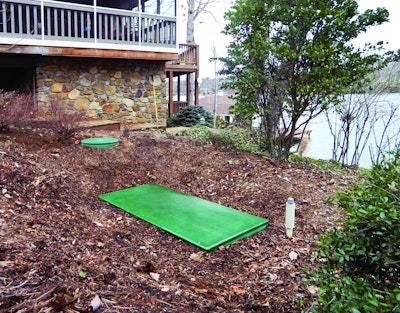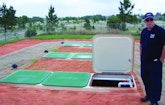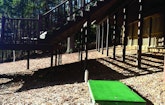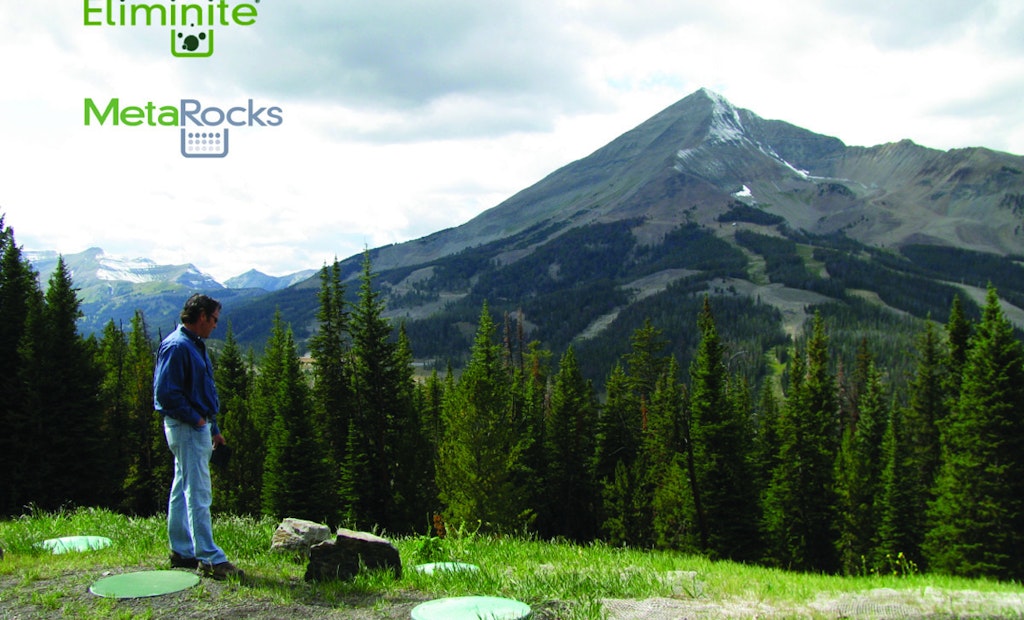Interested in Systems/ATUs?
Get Systems/ATUs articles, news and videos right in your inbox! Sign up now.
Systems/ATUs + Get AlertsTreatment system needed for space-limited lakeside site
Problem
A homeowner's existing system on Bear Lake in Michigan was showing the initial signs of failure. Due to the proximity of the lake and site constraints, a compact treatment system was required.
Solution
Erin Parker, an engineer from Parker Engineering in Lake Ann, Mich., specified the GSF system from Eljen Corporation. The system passively treats and disposes of effluent in the same footprint. In this case, a lift pump to gravity distribution was required to achieve the desired drainfield location.
Result
The installation on the slope was permitted by District No. 10 HD, supplied by Harbor Pipe and Supply Co., and installed by Belanger's Excavating. The installation went quickly, allowing the family to get back to enjoying Bear Lake. 800/444-1359; www.eljen.com.
Steep slopes make onsite installation difficult in subdivision
Problem
A 68-lot residential subdivision in Montana with steep slopes and numerous bedrock outcroppings made it difficult to install conventional onsite systems with subsurface drainfields. The state's Department of Environmental Quality required a minimum 60 percent influent nitrogen reduction prior to disposal.
Solution
Despite utilizing state-approved treatment systems, sampling from several homes showed discharge nitrogen limits at the central dosing tank in excess of permit limits, resulting in ongoing violations. The developer saw success after installing Eliminite nitrogen-removing treatment systems and now requires the systems for all future construction.
Result
The subdivision has been in compliance with nitrogen discharge limits since requiring Eliminite systems. The most recent sample data collected from the central dosing tank shows a total nitrogen concentration of 9.8 mg/L, approximately an 86 percent removal of nitrogen. 406/581-1613; www.eliminite.com.
Septic adjustments needed to expand rental property
Problem
A property owner in Smith Mountain Lake, Va., wanted to expand his existing three-bedroom waterfront rental property. The county health department's guidelines required adding a 50 percent reserve to the drainfield's capacity before renovation could be approved.
Solution
The homeowner approached Hubert Ayers of Septic System Services, who had assisted a neighbor during a similar expansion project. Ayers asked Ben Shrader, of Shrader Engineering & Land Surveying, Inc., to first conduct a Ksat soil test to determine an accurate perc rate. A wastewater system upgrade was designed using an Orenco AdvanTex AX-25RT treatment system. The system features a small footprint, large reserve capacity, and the ability to meet permit limits of BOD/TSS 10/10 mg/L.
Result
With the addition of the unit and correct perc rate, the 50 percent reserve capacity was no longer necessary, and the county approved the plans. The property now has a five-bedroom rental home, increasing revenue for the owner while meeting the stringent requirements of this environmentally sensitive community. The increased capacity allows the homeowner to use half the drainfield each year, extending the life of the system. 800/348-9843; www.orenco.com.
Replacement needed for failing sand filter system
Problem
The sand filter at Hutchens Elementary in West Mobile County, Ala., served the school and an adjacent 160-lot residential development. It served well, but time and increased wastewater load led to a failure of the filter. Mobile Area Water and Sewer decided to replace it.
Solution
The utility wanted to utilize the two existing 30,000-gallon Xerxes tanks that were used to dose the sand filter. Wastewater from the school and the subdivision is pumped to the existing recirculation tanks. The pumps in the existing tank were replaced with six Quanics turbine effluent pump packages. Six ATS-16-AC AeroCell modules were then installed in the footprint of each of the two existing sand filters. After passing through the open cell foam media, 80 percent of the effluent is routed back to the recirculation tanks for further treatment. The remaining 20 percent is discharged to a subsurface chamber system.
Result
J. H. Wright and Associates of Daphne, Ala., coordinated the project with design engineer Harold Barker of Volkert Engineering in Mobile, Ala.
System startup occurred in fall 2008, and the site was immediately fully operational. 502/992-8216; www.quanics.net.









